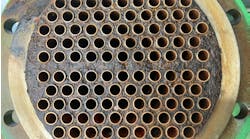I marvel at how lucky I’ve been in avoiding serious injury during my long career working at plants. I haven’t remained unscathed, though. I’ve cut my knee open to the bone, covered my hands with scars, suffered temporary blindness from corrosive dusts and acids, and even gone deaf for a day from tuning a burner. Once, I broke my arm and spent eight hours choking down ibuprofen before sampling French medical care, which was better than any I ever received stateside. Such accidents were commonplace before the U.S. Occupational Safety and Health Administration (OSHA) was created in the early 1970s. Even today, you still can’t completely avoid them — but you can take steps to reduce their occurrence.
[pullquote]
One prevention measure developed by OSHA is the Job Safety Analysis (JSA); some companies employ JSA, e.g., http://goo.gl/pZzodS. OSHA describes the JSA as “good orientation for new employees and as an investigative tool for near-misses and accidents.” However, a JSA has much wider value for inspiring reflection on safety throughout a company. Let’s consider good practices in a JSA.
First, the JSA should include graphics. Here, I assume that the principle engineer responsible for the job prepares a preliminary scope of work as a framework for a committee review. I suggest using a workflow diagram or flow chart to describe the work sequentially (or a Gantt chart for complicated construction or maintenance work). Consider the following key elements in your diagram: 1) the skill level of the people involved; 2) interference with normal production; 3) bottlenecks; 4) time to complete work and then to inspect and test components; 5) the number of people needed to complete a task in the diagram; 6) the proximity of teams working together in a confined space or area; and, lastly, 7) the availability and skill of extra help that you almost certainly will require for task completion.
[callToAction ]
While templates are useful, they don’t replace the need for doing your own thinking, as I’ve warned in the past: “Think More About Electrical Area Classification.” The templates used during hazard and operability studies are supposed to evoke “Eureka” moments during discussions. You can improve your chances of catching unconsidered risks by assembling a diverse group to conduct the JSA. I’ve suggested ways to diversify committees, too: “Make Your Team More Effective.”
The committee should contain workers who will complete the task as well as others in construction or maintenance who will oversee the work. If contractors are involved, include them — and don’t forget to account for their hours in contract budgets. Also, add operations personnel. Safety engineers and other outside experts should participate — at least during the kickoff at the start of the meeting.
The principle engineer should prepare a preliminary JSA form that describes the work to be completed. The final JSA will include any changes made by the committee.
The most important elements for the committee to consider are the contingencies when a procedure fails. Many common questions apply. What if the power goes out? What unintended consequences could result from actions taken? Is there a safer way to do the work? Is there a less complicated way to complete the job? Is one step in the process more dangerous than others? And, lastly, what was missed?
Let’s consider the outline of the committee review. The principle engineer presents the preliminary JSA scope. Next, the group discusses each step in detail. This results in a revised final workflow diagram for filing. Because construction and maintenance seldom follow immediately after design, it’s important to review the final workflow diagram with the actual workers right before starting the task. I suggest going over this diagram every day with all shifts doing the work until the job is completed.
If your facility isn’t familiar with the JSA philosophy, I suggest practicing one of the many accidents described by the U.S. Chemical Safety Board where routine maintenance turned into tragedy.



